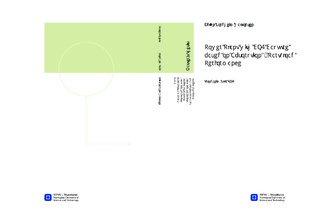| dc.description.abstract | This thesis gives a detailed evaluation of the part-load operation of a natural gas-fired combined cycle with an absorption plant for capture of CO2. The study looks into each of the processes related to the plant. Both the combined cycle and the absorption process are investigated separately, in terms of their part-load behavior, and a recommendation on how the total plant should be operated at part-load is given. The first part of the current work was a theoretical study of combined cycles, absorption plants and the integration between those. Both design and off-design models have been looked into. Based on the theory, a reference plant was designed and considered as a starting point for the part-load investigation. By means of simulation models and the theory, several parameter changes have been analyzed for each of the processes. The investigation of the part-load operation of the power plant indicated a significant net plant efficiency saving if inlet guide vanes were used to reduce the air flow into the gas turbine compressor, in combination with fuel reduction. The most recommended control strategy of the inlet guide vanes regulation was an almost constant target exhaust gas temperature relative to the design point. A higher target exhaust gas temperature obtained marginally better combined cycle efficiency, but problems could occur related to very high temperature gradients in the heat recovery steam generator. Analysis of the absorption process showed a dramatic reduction in the liquid circulation rate that provided the lowest reboiler duty, as the gas turbine load was reduced. The reduction in liquid flow rate into the absorber was about 30% relative to the flow rate in the design point, for a gas turbine load of 60% with an almost constant exhaust gas temperature. Regarding problems due to insufficient wetting of the packing material in the absorber, a restriction on the liquid flow rate at part-load operation could be profitable. A relative increase in total reboiler duty of 5% was detected from the simulations if a constant liquid flow rate restriction was used, compared to 30% reduction of liquid flow rate, at 60% gas turbine load. For the integrated power plant and absorption process, steam was preferable extracted from the crossover between the intermediate-pressure- and low-pressure turbine at 3,5 bar. This extraction pressure was independent of the part-load operation, and the low-pressure turbine should be throttled in order to meet the required steam extraction pressure at part-load. The design power plant with CO2 capture obtained a total plant efficiency of 53%, disregarded mechanical losses- and compressor work in the capture plant. At 60% gas turbine load with almost constant exhaust gas temperature, the respective net plant efficiency was about 49% dependent of the liquid flow rate in the absorber. A efficiency loss of 0,3% percent points were detected if a constant liquid flow rate restriction was used, compared to 30% reduction of liquid flow rate at 60% gas turbine load. | nb_NO |

